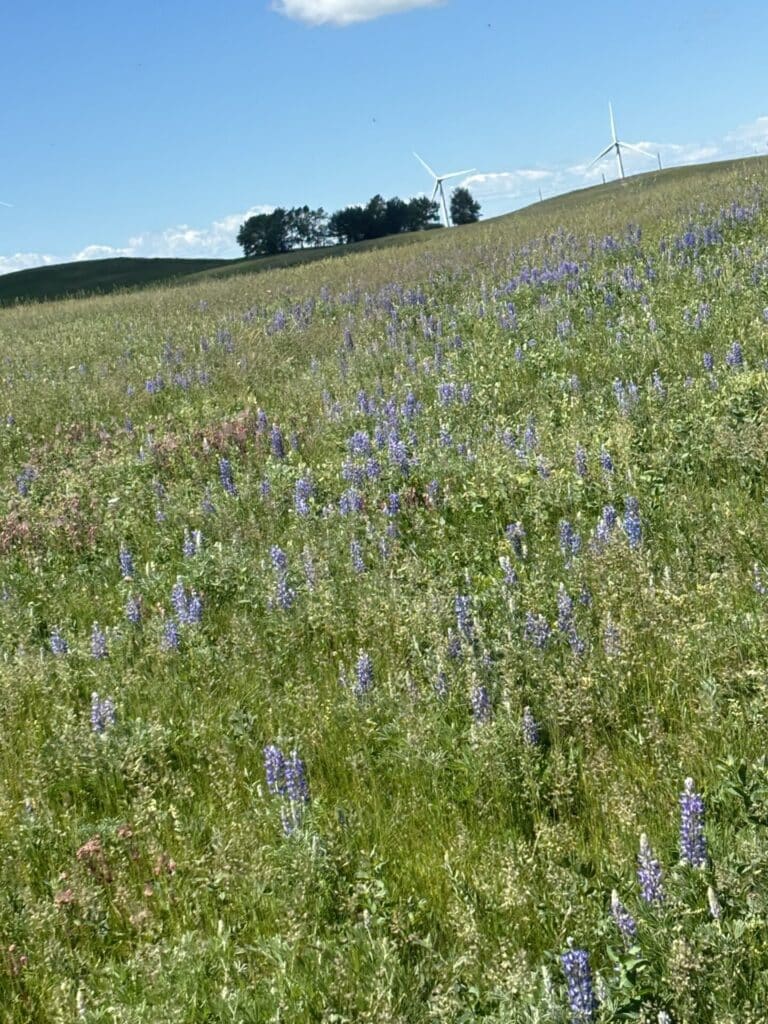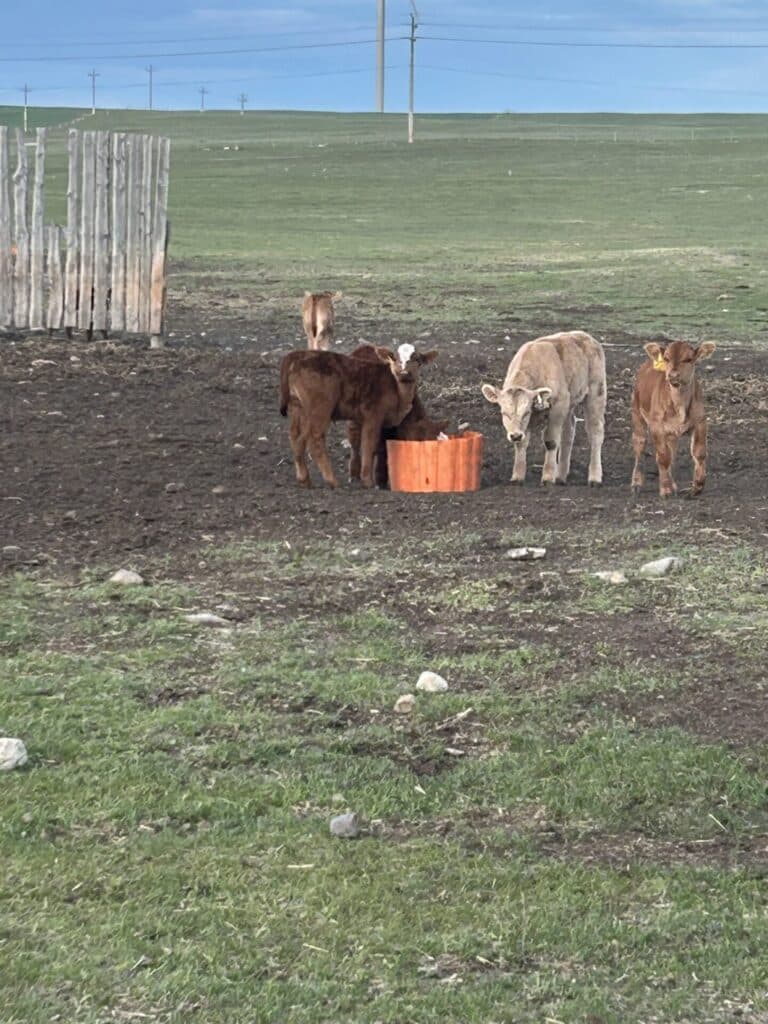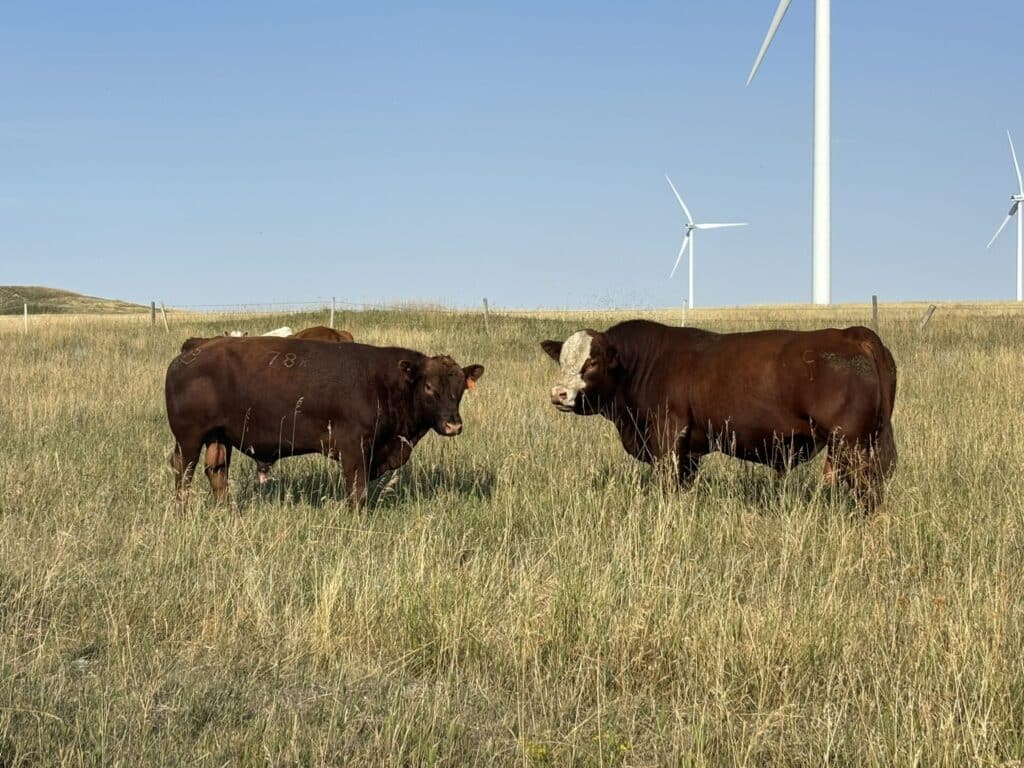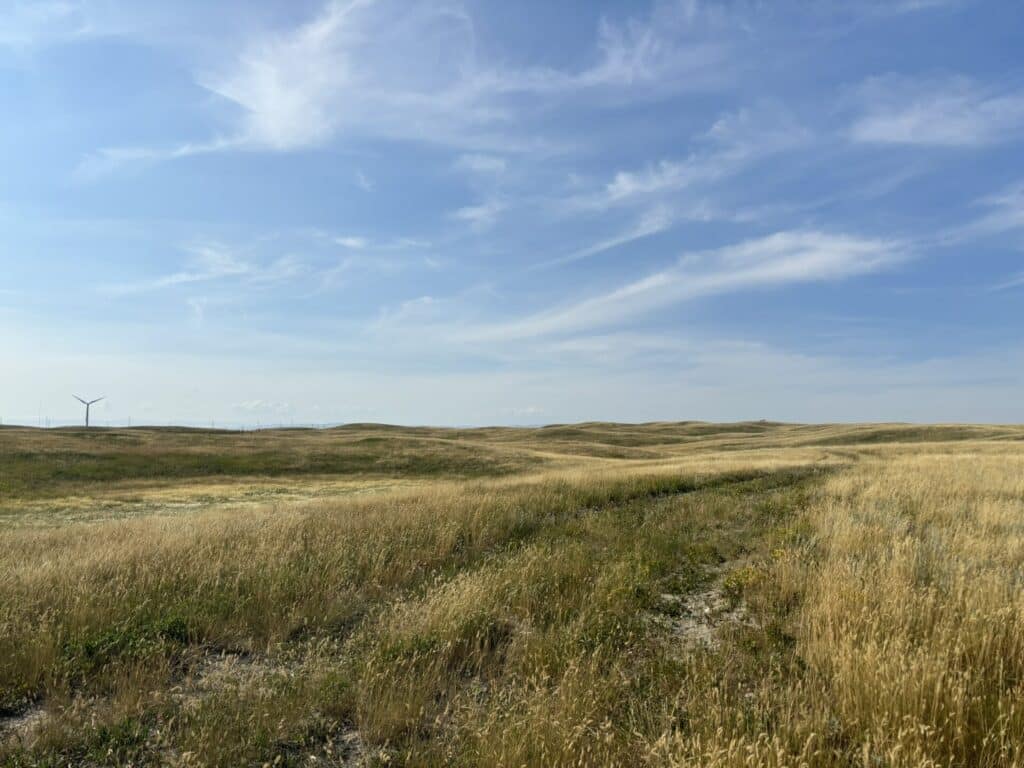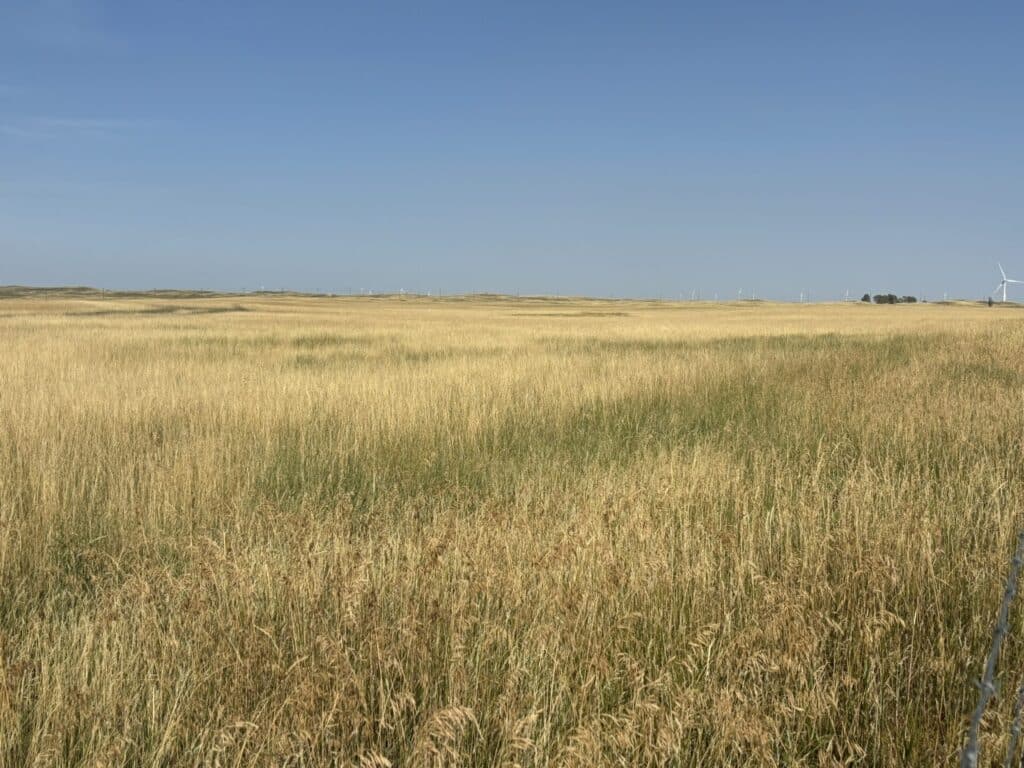Last updated on September 18th, 2024 at 10:07 am
The Future Looks Bright With Riomax
Helping Wade Chester’s dreams come true
Wade & Jaycee Chester
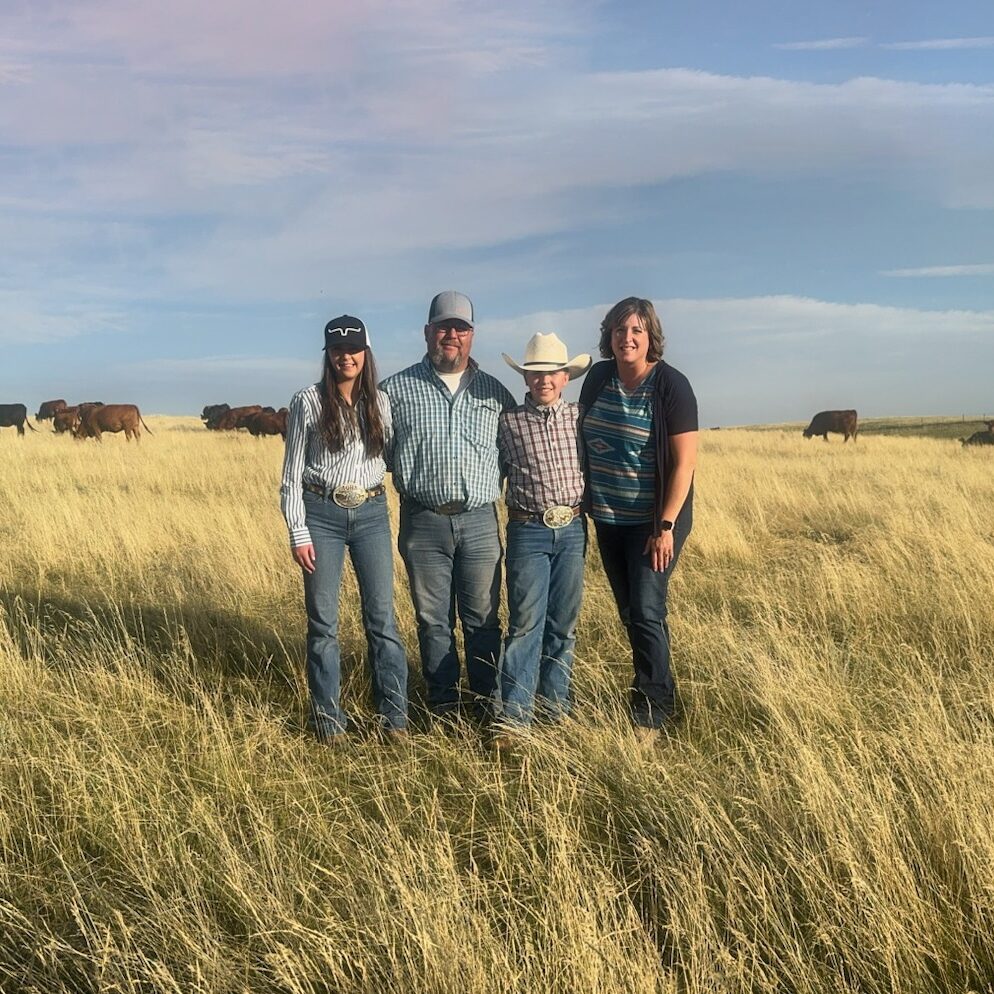
Fort Macleod, Alberta
Wander around Wade Chester’s cattle outfit near Fort Macleod, Alberta, and you’ll see a typical ranch—a well-run family outfit that blends tradition with technology as it looks to the future; not unlike most any other well-run family outfit with an eye and goals firmly fixed on tomorrow while dealing with the challenges of today.
Then you see the orange tubs. While vitamin and mineral supplements have long come in tubs, these stand out. And it’s not just the color: it’s how the cattle look that share the dried, droughted-out landscape.
The ranch is truly a family affair. Chester, along with his wife Jaycee and two children, Hailey, 14, and Carter, 12, run around 275 Red Angus and Simmental crossbred cows on around 2,200 acres of owned and leased land. “They’re both heavily involved in the ranch, both in 4-H,” he says proudly of his kids.
Chester’s great-great grandfather homesteaded in the area in 1905, and his family has been involved in agriculture ever since. Chester grew up on a dairy farm but always dreamed of being a cattleman.
“My dad and grandfather had a dairy growing up through my teens and that’s where I learned a lot about cattle nutrition,” he says. Then, in 1995, his dad passed away in a farm accident, leaving Chester to run the dairy by himself. “I sold the dairy in 1999 and bought a bigger land base and moved straight into beef cows.”
The landscape around Fort Macleod is a transition area between the prairies and the mountains. “There are some rolling, native grass hills that have never been broken out, just the way it was when the buffalo were here. We’re 40-50 miles from the base of the mountains. Then, as you head east, you hit right into full-blown prairie.”
While the winters can get cold, he says the weather typically doesn’t stay in the deep freeze all winter. While temperatures can drop as low as negative 30 to 40 degrees Celsius (interestingly, at negative 40, Celsius and Fahrenheit are the same), “The west winds will blow in here and warm things up.”
Chester breeds his cow herd to Simmental, Red Angus and Sim-Angus bulls to produce a growthy, high-quality calf. His heifers will start calving mid-April and the cows will start around the first of May. “We’ll usually brand mid-June and turn them out on grass,” he says. Weaning time is mid-October.

He started calving later in the spring a few years back for several reasons. The better weather is an advantage, certainly. But it also allows him to market his steers strategically.
He sells his steer calves right off the cow at his local sale barn. “The reason being, I was watching the market the last few years and it seemed the calves had to be 650 pounds plus or more to bring big dollars per head. Or they had to be in that 400-425 range that brought big dollars for essentially half the size. So that’s why I decided to push calving back and hit a different market.” Those calves are bound for a stocker program.
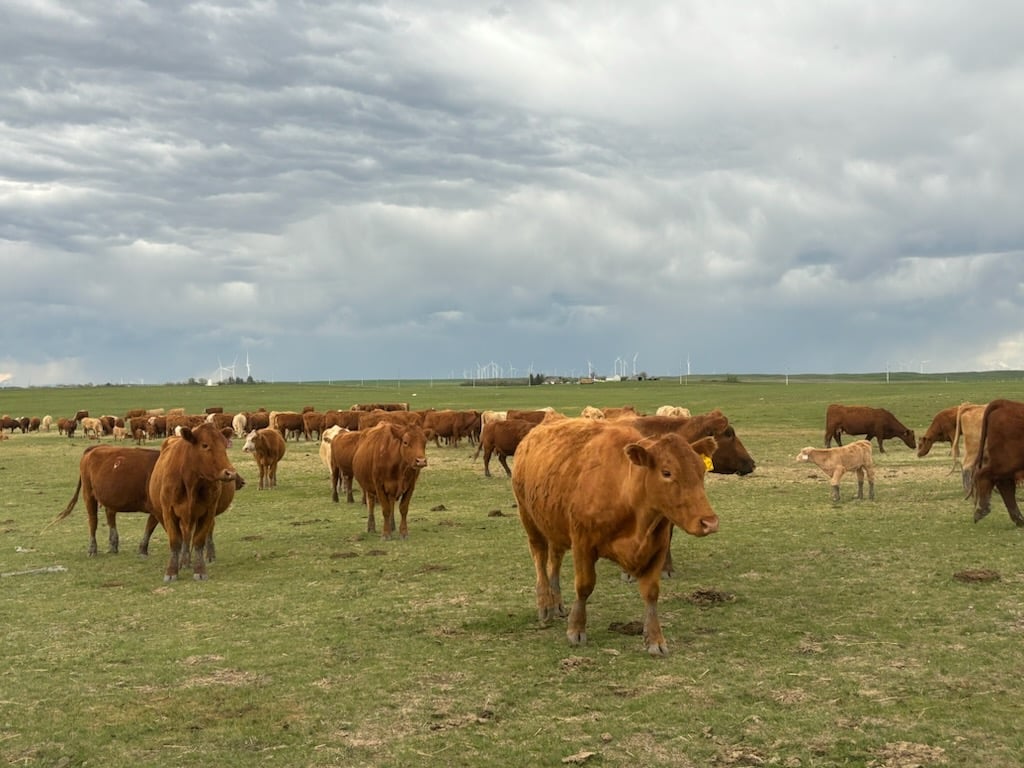
Replacement heifers, on the other hand, are backgrounded. Often, he’ll keep all the breeding-quality heifers and develop them. “I’ll wait until March-April to sort,” he says. “I’ll take my cut (for replacement heifers) and then market the rest as breeding-quality heifers.”
His heifer buyer markets them as bred heifers. “I’ve been told that they’ve had repeat buyers saying they’d like mine again.”
Riomax Deals With Drought
“We’re in the middle of a four- or five-year drought,” he says. “We had some pretty good moisture this spring and had a way better start then we have in the last four years, but we’re dry now.” Indeed, burned-up pastures and lack of hay will cause a rancher to do some deep thinking.
And that’s what he did last year. “I had heard of Riomax,” he says, but had been using a different molasses tub for around 25 years. He knew his local Riomax dealer because he works at the sale barn where Chester markets his calves.
“He asked me if I’d be interested in coming to a meeting. So I went and asked some questions and started listening.”
Then he talked to neighboring ranchers who were on Riomax and spent some time on the website. “They’ve got a phenomenal website of information once you start looking at it,” he says.
“And so I decided to take the plunge and I couldn’t be happier with the results I’ve seen.”
Before the drought hit, he started feeding his cattle early to mid-February with a combination of protein pellets and barley straw hay topped with 32% liquid molasses. “But the last few years, because of the drought and using up my stockpiled forage, I’ve been starting to feed around the end of November, first of December.”
He started on Riomax last summer and because of the drought, had to buy low-quality grass hay from Montana. “It was around 10.5% protein, I believe. And those Riomax tubs just made it into excellent quality forage,” he says. “They milked well on it,” meaning his calves got the high-quality colostrum they need to start and stay healthy.

“I know one ranch, they run 900 cows, they were treating 40, 50 calves a day. I believe I treated three.”
He did some hard math on his winter feeding, both hay and tub consumption. Then looked at his cows. “Within two weeks of putting those tubs out, what the manure looked like. The cows were just happy. They were content. They weren’t ‘wolf-packing’ those tubs like they did the competitors. They seemed to come in, get their licks and keep on going.”
It's About Cost per Head per Day
His math told the tale. “I came in just about 23% less feed to the same amount of cows. And they were in better shape.”

What’s more, they were content grazing dried up pasture grass. “Last year when grass was completely dried up, they would be laying around content, not continually walking fences and searching for something better,” he claims.
Better body condition spurred by better nutrition leads to better conception rates. There the numbers are equally telling. When he preg-checked his replacement heifers mid-August this year, he had one dry out of 35 head on a 60-day breeding season.
Chester isn’t shy about telling other ranchers about the advantages of Riomax. But he tends to get some pushback. “The guys I talk to, they can’t get past the price of the tub, per tub. And I say you’ve got to think past that. It’s cost-per-head-per-day.”
He tells them about the Riomax consumption guarantee and that his cows have never consumed enough to trip the trigger on that promise. “As high as mine have gotten on consumption is 0.28 pound,” he says. “Once you figure that out, if you go back to a dry mineral program or another tub, you’re over double what I’m paying,” because of the higher daily consumption rate.
Based on feeding 23% less winter feed, Chester says that savings alone nearly covered the cost of the orange Riomax tubs. Then when he considers better calf health and higher breed-up, along with the animal welfare considerations of happier, more content cows in better body condition, using Riomax just makes sense.
“Plain and simple, they don’t eat as much as they do with the other tubs. And the Riomax tubs do a totally different thing than the other tubs. So they really are the tubs that pay for themselves.”




